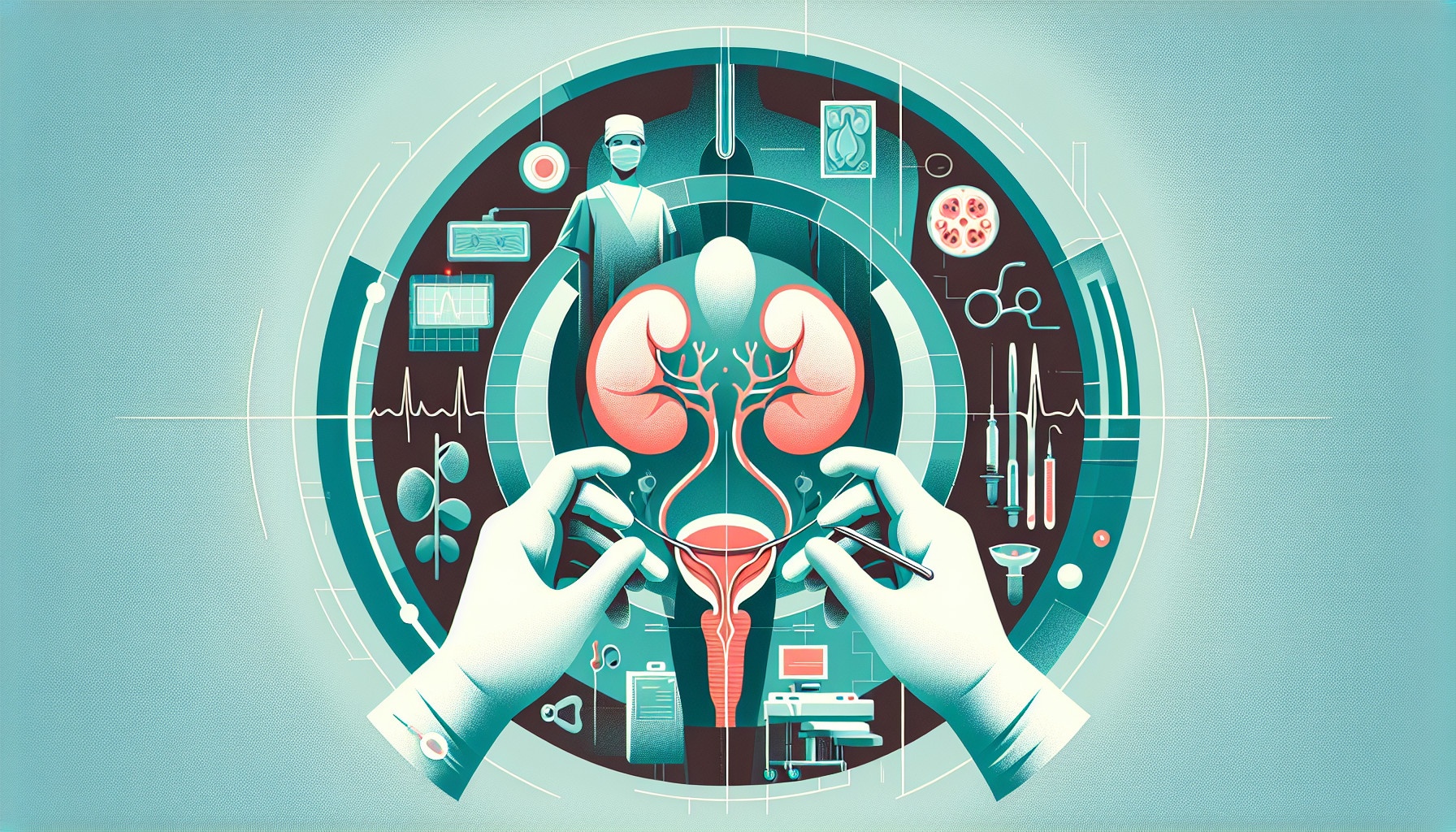Our Summary
This research paper is about a new method of transplanting the human urinary bladder, which has never been done before due to various technical difficulties. These challenges include the complex blood vessel structure in the pelvis, limited visibility during surgery, and the overall complexity of the procedure. In order to prepare for the first human trial of this procedure, the researchers conducted experiments in pigs, human cadavers, and human donors who were brain-dead but whose hearts were still beating.
The goal of these experiments was to develop a reliable method for transplanting the bladder using a robot. The researchers defined success as the bladder graft being adequately supplied with blood after the transplantation. They also looked at factors like how long the surgery took, how long the bladder graft was without blood supply, and how much blood was lost during the operation.
The researchers were able to successfully transplant the bladder in two pigs, one cadaver, and three brain-dead human donors. They found that the time it took to perform the surgery decreased with each successive operation, and visual inspection showed that the bladder grafts were healthy and well-supplied with blood. In one brain-dead donor who was kept alive for 12 hours after the surgery, a follow-up inspection confirmed that the transplanted bladder was still well-supplied with blood and the bladder’s inner lining was intact.
These experiments represent important preliminary work towards the first human trial of bladder transplantation. This work was done under a program approved by the United Network for Organ Sharing, which coordinates organ transplantation in the U.S.
FAQs
- What were the main challenges in transplanting the human urinary bladder as mentioned in the research paper?
- How did the researchers measure the success of the bladder transplantation procedure?
- What were the results of the transplantation experiments conducted on pigs, human cadavers, and brain-dead human donors?
Doctor’s Tip
A doctor might tell a patient undergoing bladder surgery to follow post-operative care instructions carefully, including taking prescribed medications, avoiding strenuous activities, and attending follow-up appointments to monitor healing and address any concerns. It is important to communicate any changes in symptoms or unexpected pain to your healthcare provider to ensure a successful recovery.
Suitable For
Patients who are typically recommended for bladder surgery include those with bladder cancer, bladder dysfunction, bladder diverticula, bladder stones, interstitial cystitis, neurogenic bladder, and urinary incontinence. Bladder surgery may also be recommended for patients who have not responded to more conservative treatments such as medications or physical therapy. Additionally, bladder surgery may be necessary for patients who have experienced trauma to the bladder or have congenital abnormalities affecting the bladder.
Timeline
Before bladder surgery, a patient will typically undergo a series of tests and consultations with their healthcare team to determine the best course of treatment. This may include imaging tests, urine tests, and discussions about the risks and benefits of surgery. The patient will also need to follow pre-operative instructions such as fasting before surgery and stopping certain medications.
During bladder surgery, the patient will be under general anesthesia and the surgeon will make incisions in the abdomen to access the bladder. The surgeon will then remove the diseased or damaged bladder and replace it with a healthy donor bladder. The surgery may take several hours to complete.
After bladder surgery, the patient will need to stay in the hospital for a period of time to recover. They will likely experience pain and discomfort at the surgical site and may have a catheter to help drain urine from the bladder. The patient will need to follow post-operative instructions such as taking pain medications, avoiding strenuous activities, and attending follow-up appointments with their healthcare team.
Overall, the timeline for a patient before and after bladder surgery can vary depending on the individual case and the specific procedure performed. It is important for patients to closely follow their healthcare team’s instructions to ensure a successful recovery.
What to Ask Your Doctor
What are the potential risks and complications associated with bladder transplantation surgery?
How will my recovery process look like after the surgery?
What is the success rate of bladder transplantation surgery?
How long will the surgery take?
Will I need to take any medications or undergo any special treatments post-surgery?
How long will I need to stay in the hospital after the surgery?
What kind of follow-up care will I need after the surgery?
Are there any lifestyle changes I will need to make after the surgery?
Will I need any additional surgeries or procedures in the future related to the bladder transplantation?
What are the alternatives to bladder transplantation surgery, and how do they compare in terms of effectiveness and risks?
Reference
Authors: Nassiri N, Cacciamani G, Gill IS. Journal: J Urol. 2023 Oct;210(4):600-610. doi: 10.1097/JU.0000000000003620. Epub 2023 Sep 8. PMID: 37681535
